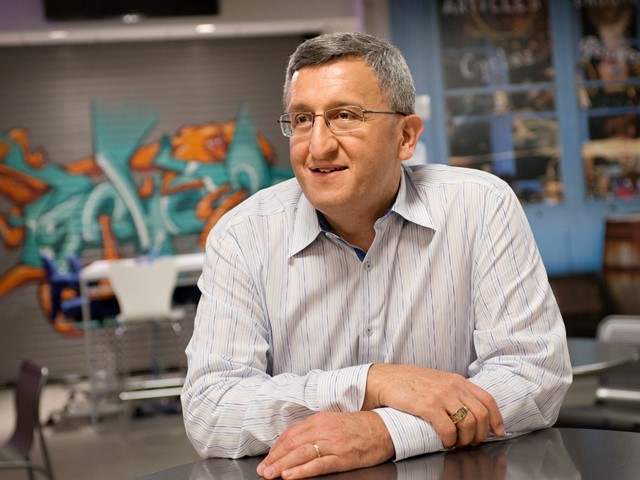As humanity sets its sights once more on the Moon, a curious blend of excitement and innovative collaboration is taking shape in the world of aerospace technology. At the heart of this journey lies Draper, an influential MIT spin-off engineering lab, revered for its pivotal role in developing the Apollo 11 Guidance Computer. Under the leadership of Ken Gabriel, Draper is poised to redefine lunar exploration in partnership with industry giants like Blue Origin, Lockheed Martin, and Northrop Grumman. But what does the future really hold for space technology, and how does Gabriel envision the intersection of innovation and exploration? Let’s dive into the depths of his insights.
Revolutionizing Lunar Landings
When Jeff Bezos announced a collaboration between Blue Origin and its partners to build a human-rated lunar lander, it marked a significant milestone for the Artemis program. Draper is spearheading the development of the avionics and guidance systems essential for landing humans on the lunar surface by 2024. Ken Gabriel, who has a fascinating history that includes co-founding Google’s Advanced Technology and Projects division, regards this mission as a continuation of a legacy grounded in innovation.
As Gabriel puts it, “Draper has been a part of every NASA human mission to the moon. Not many companies can claim that.” This statement not only underscores the technical prowess of Draper but also reflects Gabriel’s ambition to foster projects that push boundaries. By drawing parallels with techniques in biomedical imaging, Draper has developed the Hemera LiDAR Detector, which triumphs where traditional systems fail—seeing through extreme weather conditions to facilitate precise navigation.
The Landscape of Space Technology
The current climate of space technology investment is ripe with opportunities. In an era where multiple entities are racing to return humans to the Moon, Gabriel identifies three critical drivers propelling the sector forward:
- Space Tourism: With the potential for trips to space costing around $50,000, space tourism could transform into a booming industry, enabling more people to explore beyond Earth.
- Earth Observation: The ability to gather vital environmental data from space is becoming increasingly important, from tracking climate change to monitoring habitats.
- In-Space Manufacturing: The Moon may house valuable resources such as Helium-3 and offer unique manufacturing processes that are cost-prohibitive on Earth.
Gabriel envisions a future wherein interplanetary travel, like missions to Mars, becomes feasible, leveraging the Moon as a pivotal launch point. Due to its lower gravity, achieving escape velocity for Mars missions will require significantly less energy when launched from Earth’s natural satellite than from Earth itself. This insight may redefine our strategies for exploring the solar system.
Innovative Technology: The Intersection of Engineering and Biotech
A major area to watch, according to Ken Gabriel, is the convergence of engineering, biotech, and biopharma. He poignantly highlights the current hurdles in drug development, emphasizing that investment in these fields could yield revolutionary breakthroughs. The traditional drug-development process is fraught with inefficiencies, and developing new technologies to better mimic human reaction to drugs could radically reshape healthcare.
This innovation doesn’t merely stop at drug research. The marriage of disciplines can enable more informed solutions for health challenges, driven by data, engineering insights, and rapid iterations of concepts that ultimately have the power to save lives.
Climate Tech: Reshaping Our Planet’s Future
Ken Gabriel’s futuristic thinking also extends to climate technology. He asserts that inventive solutions for carbon sequestration and environmental monitoring could pave the way for tangible improvements without necessitating prohibitive sacrifices. By leveraging space-based technologies for environmental observation and tracking, we can address pressing issues ranging from oil spills to plastic pollution.
As we stand at the cusp of these advancements, Draper and Ken Gabriel exemplify the spirit of disciplined innovation—a theme that harkens back to President Kennedy’s bold Moonshot program. With an eye toward the future, there’s an atmosphere of urgency and focus, elements crucial for nurturing groundbreaking initiatives.
Conclusion: A Bright Future Awaits
As we embark on this exciting new chapter of lunar exploration, the visionaries driving these initiatives remind us that the quest for knowledge extends beyond the stars. Through their groundbreaking work, Draper and their partners are cultivating a more interconnected world of technology and innovation.
In the words of Ken Gabriel, this is just the beginning. As exploration drives unprecedented levels of automation, innovation in biotech emerges, and climate tech matures, we are undoubtedly in for a remarkable journey. Together, these advancements will propel humanity into a new era—one defined by daring and the relentless pursuit of progress.
For more insights, updates, or to collaborate on AI development projects, stay connected with fxis.ai. At fxis.ai, we believe that such advancements are crucial for the future of AI, as they enable more comprehensive and effective solutions. Our team is continually exploring new methodologies to push the envelope in artificial intelligence, ensuring that our clients benefit from the latest technological innovations.

